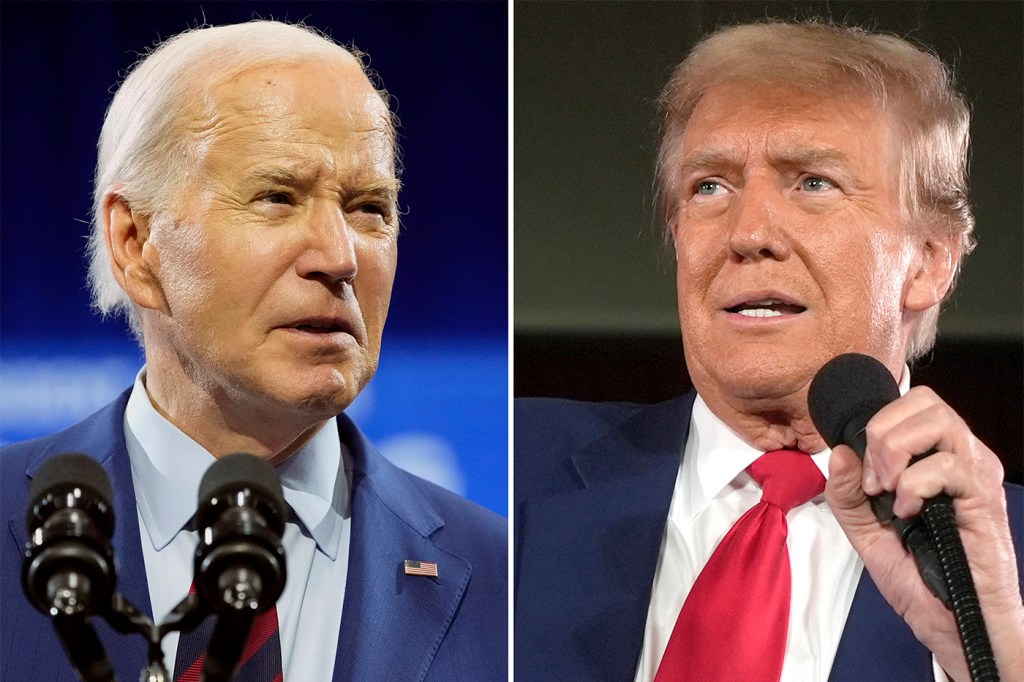Election 2024: New poll tracker by Northeastern political scientist plots changes within pollsters
The tracker measures changes in support for Joe Biden and Donald Trump across 10 major pollsters, including YouGov, Ipsos and Emerson College, among others.

The world of public opinion polling is a noisy one. One week, a pollster might show President Joe Biden up one point, then down two points a week later. Another pollster might show Biden and Donald Trump in a statistical dead heat — a sensible reading, perhaps, given the fierce political divide in the U.S. these past election cycles.
Regardless of what the polls say week to week, questions about the methods and biases of pollsters always crop up: who are they talking to; what states and regions are they sampling; and how are they compiling the data?
Nick Beauchamp, associate professor of political science at Northeastern University, wants to cut through the noise. Motivated by a desire to give a much simpler readout of polling data in the 2024 presidential election, Beauchamp created a new poll aggregator that tracks changes within pollsters over time, plotting changes in graphs he’s published on his website.

The tracker measures changes in support for Biden and Trump across 10 major pollsters, including YouGov, Ipsos and Emerson College, among others.
Specifically, Beauchamp’s project — which he calls Derivative Polling — looks to answer two questions: How have the polls been changing? How does today’s poll compare to the previous poll by the same pollster?
Graph by Nick Beauchamp/Northeastern University
Beauchamp spoke to Northeastern Global News about the tracker. His answers have been edited for brevity and clarity.
Tell us about this latest project. What insights does your tracker offer over others?
Every day there are new polls coming out, and every day people are discussing what these polls mean. If you’re in the Biden camp, you might wonder, is this poll good or bad for Biden. Sometimes you’ll hear things like Biden is up one point, or seems to be gaining ground. But then someone else might say, well, is this one of those pollsters that is systematically pro-Biden. In which case, it might not be that he’s actually going up in the polls, but rather the poll is from an outfit that has a different distribution of people they reach.
Indeed, some outfits seem to be a little bit more pro-Democrat, others more pro-Republican. So people ask then, what is the underlying bias of any one pollster?
That’s a very hard question to answer, and often instead of answering that question, they’ll just say, OK, how did he do in the last poll by this pollster? A lot of times what people are interested in as it pertains to the day-to-day polls is whether a candidate is gaining or losing ground — often in the context of news events, like Trump’s ongoing criminal trial or geopolitical developments abroad.
Does aggregating the data in this way help us also gain insight into differences in pollsters’ methodologies?
There are interesting questions about how the pollsters differ both in their approaches and in terms of what they manage to create. One of the things that is fairly noticeable, for example, is that the pollsters do tend to change in fairly synchronized ways.
We see this long period where quite a few of them showed rises in Biden; some were showing rises like 48-49, 50-51 and 56-57; but the overall trend was often shared among the pollsters even when their baseline was different.
Of course, this is what we should expect statistically, but it’s nice to be able to see it visually — and to be able to see both the across pollster differences in their baselines, and the shared trends. One can discern all of this if you go to the aggregator sites and look deeply at their data sets.
But another reason to do it like this is that, from an aggregator’s point of view, the poll aggregators have gotten very complicated. The way I’ve done it is very transparent; what you see is what you get.
Graph by Nick Beauchamp/Northeastern University
I just try to aggregate those things and trust that whatever the pollster is doing will be consistent from week to week so that, even if there are variations in how they make these decisions, that gets removed in the wash. You try to simplify as much as possible without killing it.
Here, we don’t have to worry about the biases of pollsters; we don’t have to worry about all sorts of complicated questions of forecasting and so forth, so you get this nice clean picture. I thought I could package it in a way that could be automatically updated so that anyone who is afflicted, as I am, with a need to look at the polls can have a quick-glance piece of information about how things are changing and shaping up.
Featured Posts
How do you see the influence that polling has — perhaps specific to this election cycle, but also in general — on the electorate? Is there a bandwagon effect as people respond to various measures of voter preference?
It’s been interesting as a political scientist watching a segment of the public — mainly the educated, politically engaged, which is a very small segment — become more educated and sophisticated in their understanding and reading of polls over, say, the last decade or so.
There’s been a huge education in public understanding, again among this fairly self-selected group, starting probably in 2016 when there was this shock to the system after Trump was elected [In the lead-up to the 2016 presidential election, most polls predicted that Hillary Clinton would win]. Then you had kind of an interesting public discourse about what polls are for and how much we should trust them, etc.
And these days — now that we’re almost a decade past that shock — I think people are more sophisticated in their understanding of how these things work. They don’t trust them too much, and they don’t entirely dismiss them either.
What you want is for people to have a moderate amount of poll interest and trust — not so much that you have this huge feedback loop where it becomes a self-fulfilling prophecy, and not too little where people just ignore it altogether and have no response to public opinion.
You have to have a functional relationship between what the nation is feeling and what the politicians are doing, and a lot of that is mediated by pollsters. Despite their flaws, pollsters try to get to the heart of that relationship as best they can. Tools like this can help with that — though don’t take the daily fluctuations too seriously!










